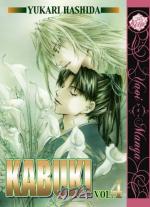|
This section contains 11,897 words (approx. 40 pages at 300 words per page) |

|
SOURCE: Shively, Donald H. “Bankufu Versus Kabuki.” Harvard Journal of Asiatic Studies, 18, No. 3/4 (December, 1955): 326-56.
In the following essay, Shively examines the relationship between the conservative Confucian government, or bakufu, and the popular Kabuki theatre during the Tokugawa period (1603 to 1850), and concludes that the government's repression may ultimately have been beneficial to Kabuki as a dramatic form. Ideographic characters in this essay have been silently removed.
The kabuki drama of the Tokugawa period was an art form which represented the taste and interests of the class of townsmen. Deprived of political and social opportunities, the townsmen tended toward grosser pleasures, and evolved a theater which was gaudy, graphic, and emotionally unrestrained. It contrasted with the drama of their social superiors, the military class of shogun, feudal lords, and upper samurai, who patronized nō drama: subtle, symbolic, a form already made static by tradition. Of all the lively forms...
|
This section contains 11,897 words (approx. 40 pages at 300 words per page) |

|


